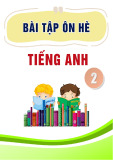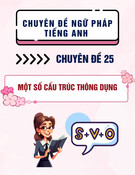
67821/,18,67,&1&8/785/
&+5&7(5,67,&62)0(73+256,1(1/,6+
19,(710(6(,,2065(/7(72&2/2856
1R7KL7KDQK7KDR
(PDLOWKDQKWKDRKRHQ
Received:05/08/2024
Revised:17/02/2025
Accepted:26/02/2025
DOI:10.59266/houjs.2025.534
EVWDFW:Toobtaineectivenessindailycommunicationandreducethe“burden”of
crammingwithalargenumberofvocabularies,peoplechangethemeaningsofwords.In
DWPHWDSKRV DQG PHWRQPLHVDH WRSRSD DV WR KDQHWKH PHDQLQV RRGV
Thisstudyiscenteredaroundmetaphorsin181EnglishandVietnameseidiomsrelatedto
colors.Thecomparativemethod,quantitative,qualitative,andsemanticanalysisareused
throughoutthisstudytondsimilaritiesanddierencesbetweenmetaphorsinEnglishand
9LHWQDPHVHLGLRPVHDWHGWRRRVLQWHPVRLQLVWLVDQGWH
.HRVmetaphor,similarities,dierences,English,Vietnameseidioms.
HanoiOpenUniversity
,,QWURGFWLRQ
In daily communication, people
oftenusewordsandword-equivalentunits
RUSUVQKLQJVDQSKQRPQDLQKLU
lives.However,ifpeopleonlyusewords
orcreatemoreandmorenewwords,the
numberofwordswillbeverylargeinthe
vocabularysystemofalanguage.Thatcan
KLQU FRPPQLFDLRQ EFDV SRSO
have to remember too many linguistic
symbols or words. To overcome this
situation, people change the meaning of
RUV R P KPDQ FRPPQLFDLRQ
needs. The change in words’ meaning
FDQ RFFU LQ D QDUURLQJ RU SDQLQJ
scope, in which the tendency to expand
themeaningisthemostcommon.Oneof
KDVRSDQKPDQLQJRRUV
commonlyusedinlanguagesismetaphor.
In this article, the researcher
FRQFDVRPDSKRUVSUVV
KURJK K V R FRORUV LQ (QJOLVK DQ
Vietnameseidioms.
7K PDLQ SUSRV R KLV DULFO LV
R UPLQ K OLQJLVLF DQ FOUDO
DUV R PDSKRUV LQ (QJOLVK DQ
Vietnamese idioms relating to colours.
Theresearchresultswillbecomevaluable
referencesourcesforEnglishlearners.
,,/LWHUDWUHUHYLH
2.1.Overviewofpreviousstudies
Many researchers have studied
idioms related to colors. Truong Thi

Suong Mai (2012) highlighted the
UODLRQVKLSEQODQJDJDQFOU
in her graduation paper,“Characteristics
R 9LQDPV ODQJDJ DQ FOU
through idioms and proverbs indicating
colours(comparedwithEnglish).”Inher
opinion, Vietnamese and English were
dierentduetoculturaldierences.
Grodska, Machulianska, and
Shapa, inthearticle“Cultural-Linguistic
VSFR7DFKLQJDQDUQLQJ6SDQLVK
Colour Idioms and Symbols,” indicated
the eectiveness of acquiring foreign
ODQJDJ VNLOOV LQ K QL R ODQJDJ
andculture.Theygotstudy resultsfrom
K SULR RDFKLQJ 6SDQLVK LLRPVR
rst-andsecond-yearstudentsatOdessa
National Polytechnic University in the
schoolyear2018-2019.
Gaipova,ontheotherside,triedto
gureouttheinuenceofundergraduate
VQV FRORU SUFSLRQV RQ KLU
translationfromEnglishintoKurdish.The
V UVOV VKR KD QUJUDD
students faced many diculties in
UDQVODLQJLLRPVUODLQJRFRORUVR
theirlackofculturalbackground.
Hamilton (2016) and Thinard
(2019) conducted research on colors
and metaphors. Thinard focused on
studying metaphors of several colors,
such as “black,” “grey,” and “white,”
while Hamilton conducted a study on
metaphors of more colors. However, no
VLV FRPSDU PDSKRUV OLQJLVLF
DQ FOUDO DUV LQ (QJOLVK DQ
Vietnameseidioms.Thus,thisstudyhelps
toaddressthestudygap.
:KDWLVDQLLRP
Christine Ammer (1997) states,
“AnLLRPLVDVSKUDVRRRUPRU
words that means something dierent
fromtheliteralmeaningoftheindividual
RUV.”[2].
In Vietnamese, idioms are dened
by Hoang Phe (2003, p. 915) as “a
xed set of words that are commonly
used, whose meaning cannot usually be
VLPSOSODLQEKPDQLQJVRK
wordsthatmakeitup.”[7]Accordingto
ProfessorNguyenLan(2010),“idiomsare
LOVLQVSRNQODQJDJDVOODV
LQKFUDLRQR9LQDPV SRUDQ
literature.Idiomsareconcise,suggestive,
andhavehighexpressiveness.”[14]
In summary, idioms in English
andVietnamesearebasedontheoverall
meaningofthewords.
2.3.Whatisametaphor?
Metaphorisawayofchangingthe
PDQLQJ R RUV E DNLQJ K QDP
R RQ KLQJ RU SKQRPQRQ R UU R
DQRKU KLQJ RU SKQRPQRQ EDV RQ
K VLPLODUL R D FUDLQ FKDUDFULVLF
betweenthosetwothingsorphenomena.
Metaphors are also called implicit
comparisonsasin“KPDQLHLVMRQH”.
In theGDQHG /HDQHV(QLVK
GLWLRQD, metaphor is dened as an
imaginativewayofdescribingsomething
EUUULQJRVRPKLQJ OVKDLV K
sameinaparticularway.[1,p.901]
In the 9LHWQDPHVH LWLRQD,
metaphor is dened as theuse of words
based on implicit comparison. [7]. Huu
Dat (2011) shares the same idea when
K UJDUV PDSKRU DV D PKR R
FRPSDULVRQ KD VV K QDPV R RQ
SRQDPKLQJVRDQRKUSEDV
onthesimilarrelationshipbetweenthem.
Accordingtotheauthor,peoplealsocall
metaphoranimplicitcomparison,aone-
sidedcomparison.[8,p.372]Forexample,
“KH KDV D RRG KHDG RQ KHVKRGH.”
means“KHLVDQLQWHLHQWL.”.

Nguyen Duc Ton (2002) denes
PDSKRU DVKVEVLLRQ RQDPVR
things,phenomena,etc.,thatdonotbelong
to the same type based on association,
LQLLQJ KP DFFRULQJ R FUDLQ
FKDUDFULVLFV DQ DULEV LVLQJ LQ
them.[13]
Intheexample“thelegofthetable”
and“WKH WHHWK R DVD,”themetaphoric
UDQVRUPDLRQ LV EDV RQ VLPLODUL R
shape.
The above authors all agree that
metaphorisasubstitution,usingthename
R RQ KLQJ RU SKQRPQRQ R UU R
another object, thing, or phenomenon
basedonsimilarity.
Metaphors are often created based
RQVLPLODUFKDUDFULVLFV
LSSHDDQHVKDSH
E.g. a head of cabbage, a hand of
bananas.
(ii).Size
E.g.jumbojetplane
LLL/RDWLRQ
E.g.footofthemountain,bottomof
DSDJ
L&RR
E.g.Orange,bananacolor...
(v).Function
E.g.keytosuccess
(vi).Behaviour,manners
E.g.crocodile’stears,anangel
LLKHWDQVLWLRQRPRQHWHWR
abstract
E.g. Kernel is a specic word,
referring to the inner part of thefruit, it
isconvertedtodenotingthecentral,most
important part of the matter; Grasping
denotes a specic movement of the
hand,butitcanalsobesaid:graspingthe
situation,graspingthecards...
(viii).Attributes,qualities,quality
E.g. The adjective “khô” (dry)
RULJLQDOOPDQVOLORUQRDUEKDV
K FRPELQDLRQ tnh cảm kh khan (no
HPRWLRQ
2.4.TheConceptofCulture
7KUKDVEQPFKUVDUFKRUN
on culture up to now. These studies all
begin by providing denitions of what
culture is. According to Nguyen Nhu
Y, “Culture is the material and spiritual
values created by humans throughout
history.”[15]
In theGDQHG /HDQHV (QLVK
GLWLRQD,“Cultureconsistsofactivities
such as the arts and philosophy, which
LV FRQVLU R E LPSRUDQ R K
development ofcivilization andpeople’s
mind.”[1,342]
Generally, culture involves
activitiesthatarespirituallyandmaterially
importanttohumansandsociety.
2.5. The relationship between
FOWHDQODQDH
DQJDJ DQ FOU DU FORVO
interconnectedandinseparable.Language
istheessenceofnationalculture,anditis
throughlanguagethatcultureistransmitted.
Thechangesanddevelopmentoflanguage
alwaysaccompanythechangesinculture.
FFRULQJ R OLQJLV 1JQ F 7RQ
(2008, p.47), “Language is an essential
meansandaconditionfortheemergence,
development, and functioning of other
elements of culture. Language is one of
K PRV FKDUDFULVLF OPQV R DQ
nationalculture.Itiswithinlanguagethat

KFKDUDFULVLFVRDQDLRQDOFOUDU
most clearly preserved. The life of each
community,each nationinaspecicera
LOOUPLQKFRQQRKODQJDJ
of that era.” In summary, language and
culturearecloselyintertwined.Generally,
K LVQF R D FOU LV UPLQ
by language, but language itself is an
independentelementofnationalculture,a
componentofculturalidentity.
,,,0HWRGRORJ
5HVHDFK0HWKRV
The comparative method is used
throughout this study to nd similarities
and dierences between metaphors in
(QJOLVKDQ9LQDPVLLRPVUODR
colorsintermsoflinguisticsandculture.
However,thewritermustconductstatistics
DQVFULELLRPVKDFRQDLQFRORUVLQ
KLFLRQDUR(QJOLVKDQ9LQDPV
IdiomsandProverbs.
In addition, to clarify the nature
R K UVDUFK REF DQ R QVU K
validity of the statistics collected, the
ULU DOVR VV PDQ RKU VSSRULQJ
research methods such as quantitatives,
qualitatives,semanticanalysis,etc.along
withchartsandtables.
DWDROOHFWLRQ
(QJOLVK DQ 9LQDPV LLRPV
UOD R FRORUV DU FROOF URP
KU PDLQ LFLRQDULV KH PHLDQ
HeritageDictionaryofIdioms,theOxford
Dictionaryof Idioms,DQ K 9LHWQDPHVH
Idiom and Proverb Dictionary. In total,
(QJOLVKDQ9LQDPVLLRPVUOD
to 10 colors, black, blue, brown, green,
HRGHQSLQSSHHGDQGKLWH,
were collected.After that, the idiomsare
analyzedtondoutwhethertheirmeanings
aretransferredmetaphoricallyornot.
,9)LQGLQJVDQGLVFVVLRQ
)LQLQV
7K V UVOV R (QJOLVK DQ
9LQDPV FRORU LLRPV FROOF URP
idiom dictionaries [2], [18] and the
VietnameseIdiomandProverbdictionary
[22]showasfollows:
4.1.1.Distribution
Table1:NumbersofidiomsinEnglishandVietnamese
&RORUV(QJOLVLGLRPV 9LHWQDPHVHLGLRPV
1PEHU 3HUFHQWDJH 1PEHU 3HUFHQWDJH
Black 16.66 27.06
Blue 18.75
Brown 5.21
Green 13.54 18.82
Grey 3.13
Golden 7.29 12.94
3LQN 6.25 3.53
3USO 5.21 2.35
5 16.67 28.24
White 7.29 7.06
7RWDO

7K QPEU R LLRPV UOD R
FRORUVLQ(QJOLVKDQ9LQDPVLVVKRQ
inTable1,with96and85,respectively.
7K QPEU R (QJOLVK LLRPV
UODRbluewasthehighest,accounting
for 18.75%, while HG DSSDU DV K
PRV FRPPRQ LQ 9LQDPV LLRPV
(28.24%), approximately 10% higher
KDQ blue in English idioms. 5HG DQ
blackULQKVFRQDQKLUSODFV
in English idioms, with 16.67% and
16.66%,respectively.However,blackDQ
HHQUKVFRQDQKLUFRPPRQ
colors used in Vietnamese idioms. This
LV ROOR E HG DQ black LQ (QJOLVK
idioms,withgreenat13.54%,only0.6%
KLJKU KDQ RGHQ, which was fourth
placeinVietnameseidioms.Thenumber
R (QJOLVK LLRPV UOD R H DV
the lowest, with 3.13%. No Vietnamese
LLRPV UOD R grey, blue, and brown
werecollectedinthestudy.
Insummary,thefrequencyofcolorsin
(QJOLVKDQ9LQDPVLLRPVisdierent
R K LPSDF R various cultural,
linguistic,and historical factorsthatshape
DFKODQJDJVPDSKRULFDODQVPEROLF
associations with colors. The reection
R FRORU SUFSLRQV DQ KLU VPEROLF
meaningsbetweenBritish andVietnamese
culturesvary.Forexample,inEnglish,HG
symbolizes passion, anger, or love (e.g.
“seeing red”), while in Vietnamese, HG
symbolizesluck,prosperity,andcelebration
(e.g.“redenvelope”forgivinggiftsonTet
holidayoratweddings).
DQVRPDWLRQRPHDQLQ
Wordmeaningchangesoccurinfour
common aspects: comparison, metaphor,
metonymy,andhyperbole.Inthisarticle,
the writer only surveys the phenomenon
R K PDSKRULFDO UDQVU R PDQLQJ
RRUVUODRFRORUVLQ(QJOLVKDQ
Vietnameseidioms.
Table2:MetaphorsinEnglishandVietnameseidioms
&RORUV (QJOLVLGLRPV 9LHWQDPHVHLGLRPV
0HWDSRU 3HUFHQWDJH 0HWDSRU 3HUFHQWDJH
Black 18.39 52.38
Blue 20.68
Brown 5.75
Green 11.49 4.76
Grey 3.45
Golden 5.75 9.52
3LQN 6.9 2.38
3USO 5.75 4.76
5 14.94 11.9
White 6.9 14.3
7RWDO
Table2providesinformationabout
K QPEUR PDSKRUV LQ(QJOLVKDQ
Vietnamese idioms related to colors.
Generally, metaphors using colors in
(QJOLVK LLRPV U PFK KLJKU KDQ
thoseinVietnameseidioms.7K QPEU
R PDSKRUV LQ (QJOLVK LLRPV UOD
R blue, black, DQ HG DV LQ K RS
threewith20.68%,18.39%,and14.94%
respectively. In Vietnamese idioms,
however, metaphors using black, white,
DQ HG were the highest, with 52.38%,
14.3%,DQ11.9%,respectively.Metaphors
UOD R H LQ (QJOLVK LLRPV U





![[Chuẩn nhất] Ngữ Pháp Cơ Bản: Sự Phối Hợp Thì (Sequence of Tenses) trong Tiếng Anh](https://cdn.tailieu.vn/images/document/thumbnail/2025/20250311/tinhtamdacy000/135x160/1246685478.jpg)


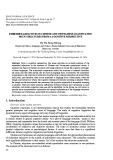

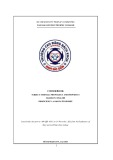

![Tài liệu Từ vựng tiếng Anh Trung cấp [mới nhất]](https://cdn.tailieu.vn/images/document/thumbnail/2025/20250913/nguyentuan250421@gmail.com/135x160/99491757910839.jpg)
![Tài liệu Từ vựng Tiếng Anh theo chủ đề [mới nhất]](https://cdn.tailieu.vn/images/document/thumbnail/2025/20250913/namdhuet@gmail.com/135x160/83251757753810.jpg)

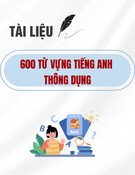
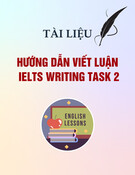
![Tài liệu Từ vựng tiếng Anh cho bé [chuẩn nhất/mới nhất]](https://cdn.tailieu.vn/images/document/thumbnail/2025/20250731/huadaithesang2509@gmail.com/135x160/18631754013896.jpg)





